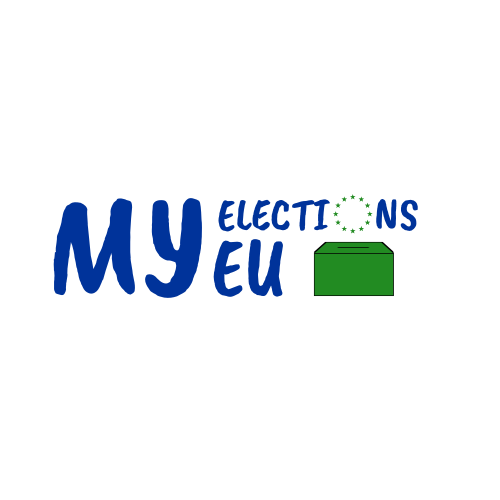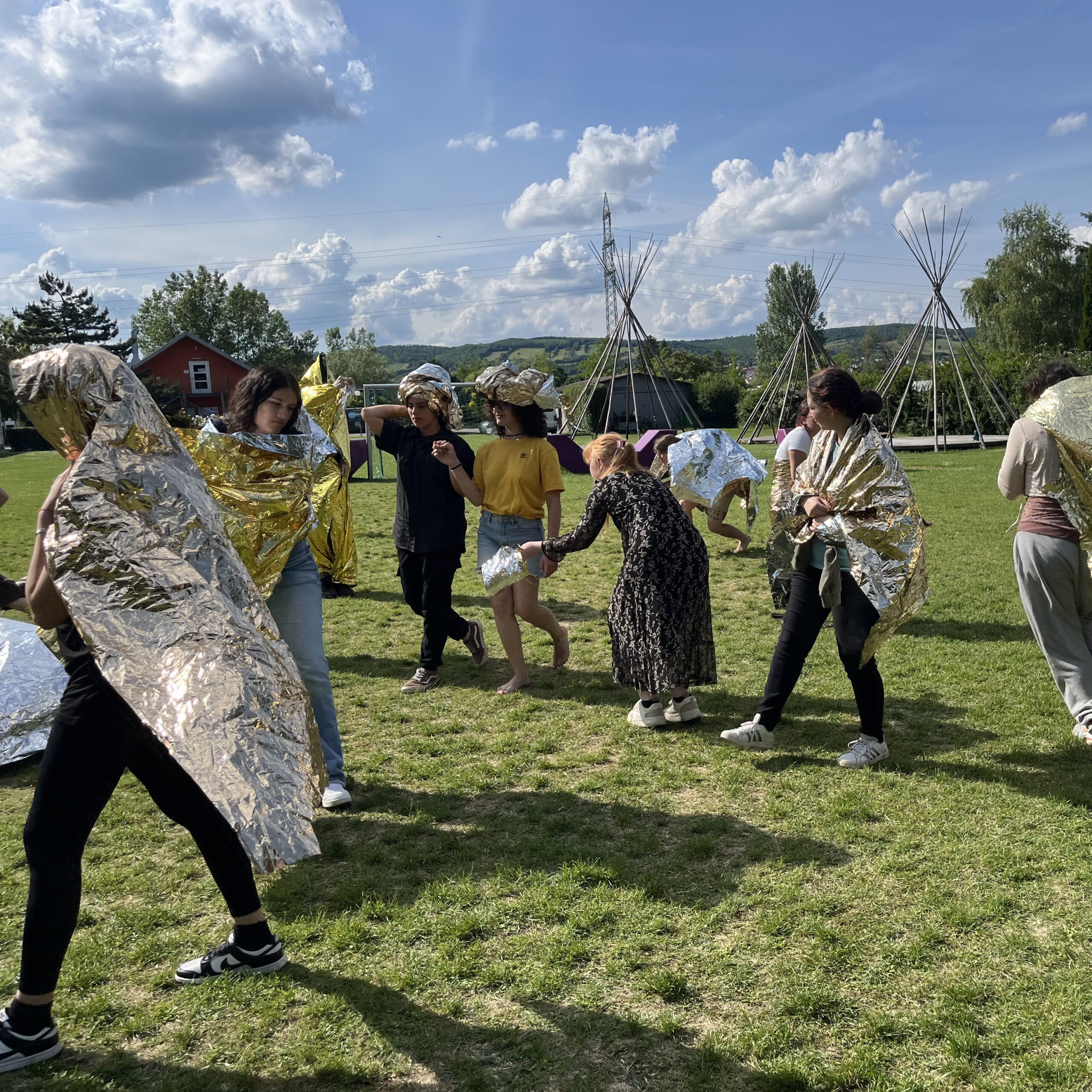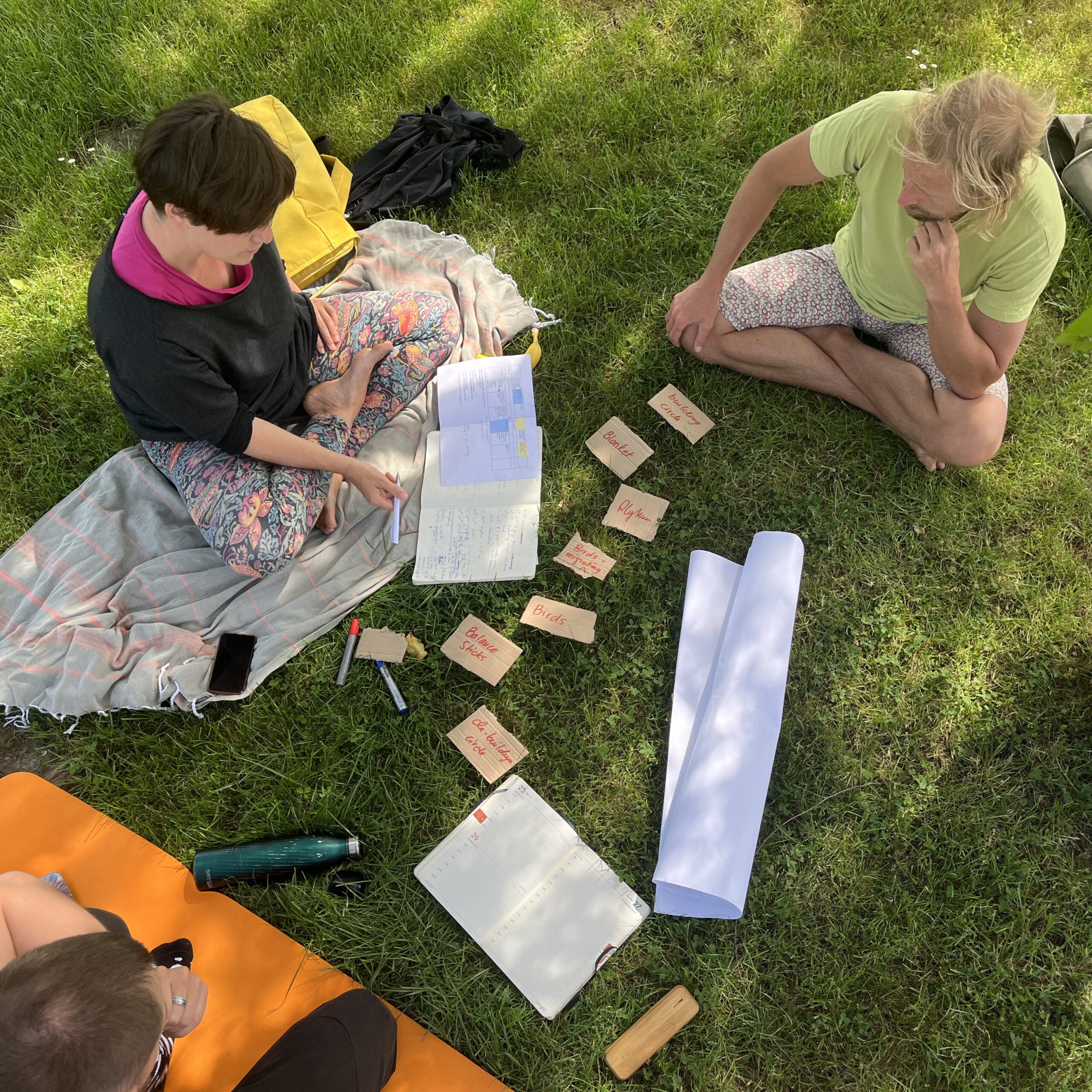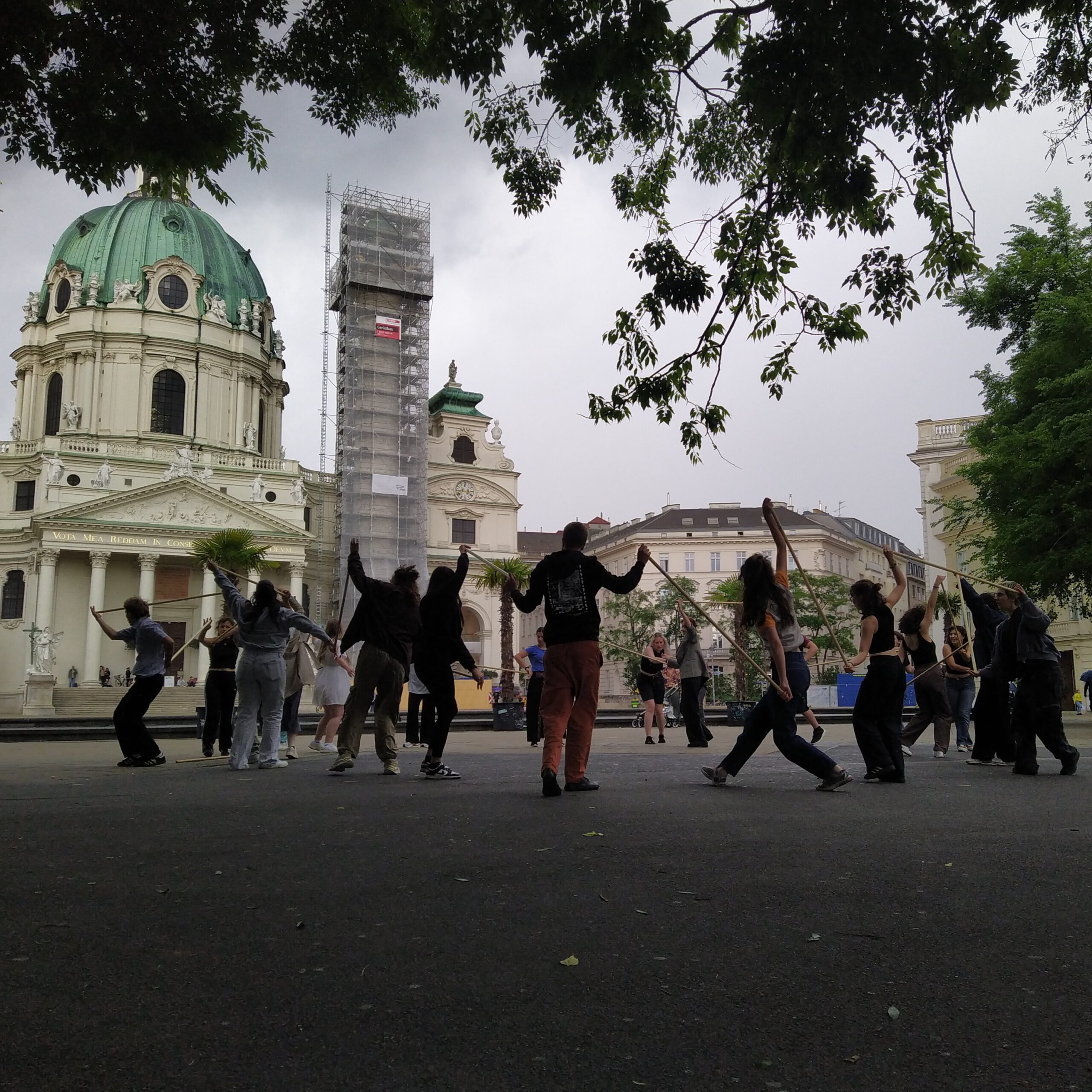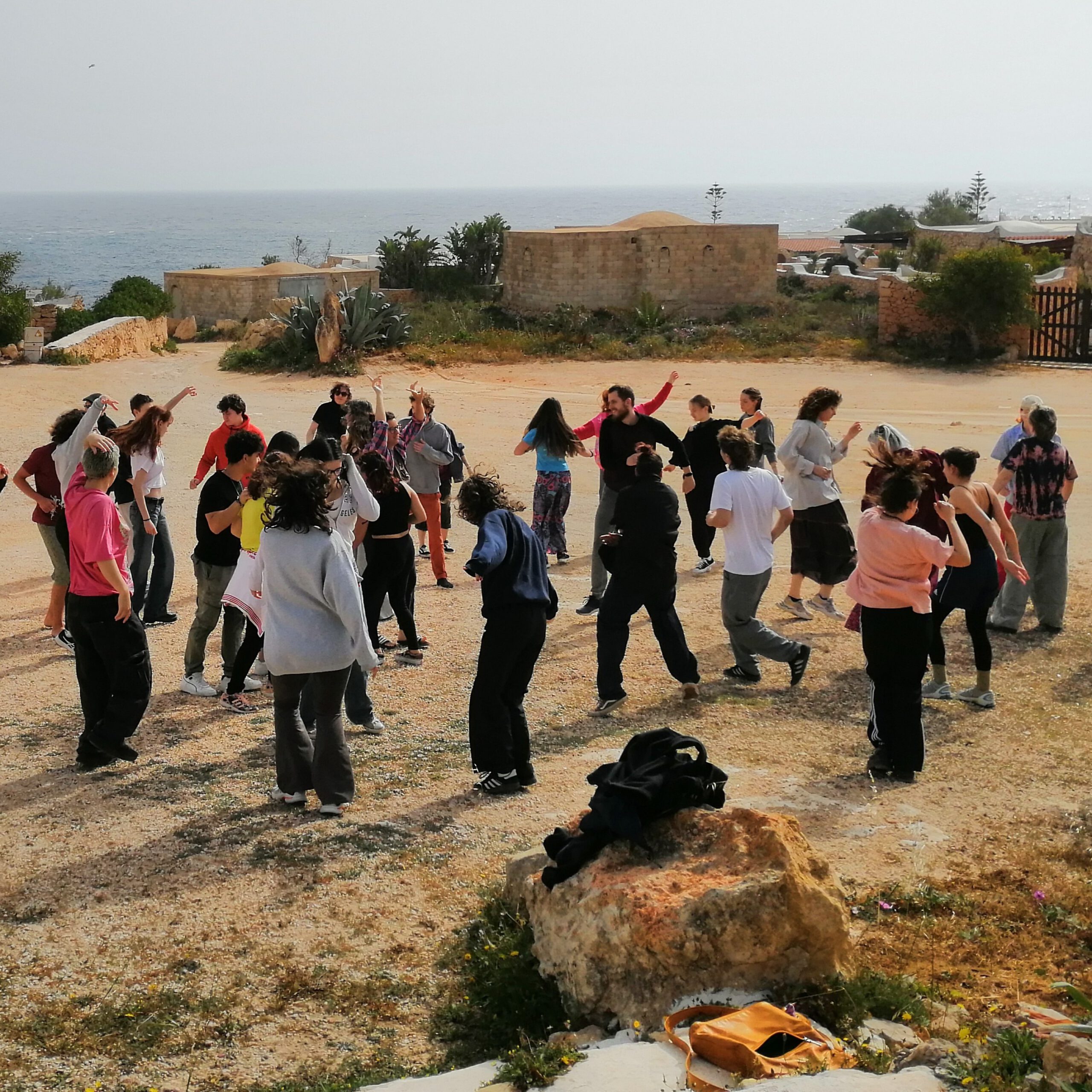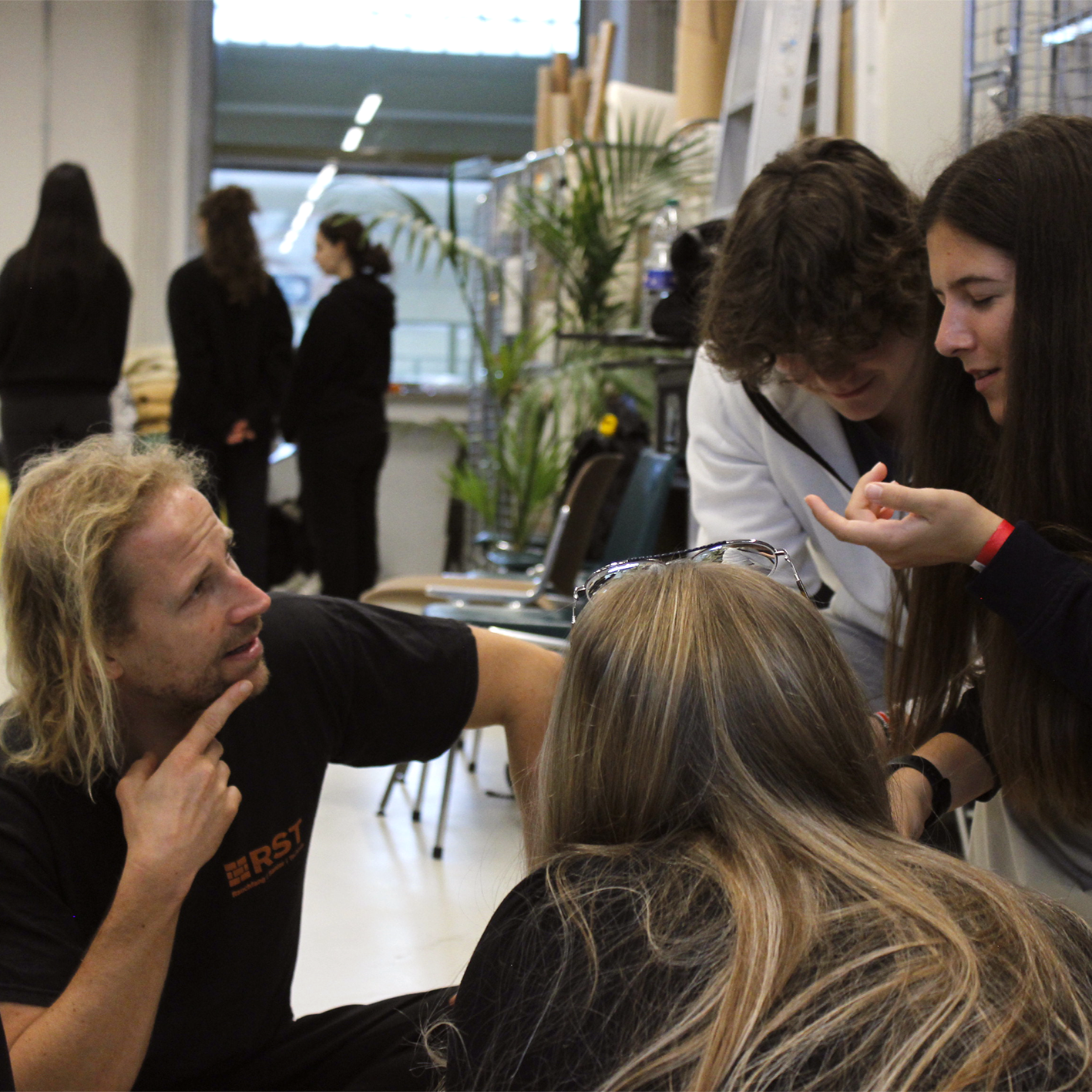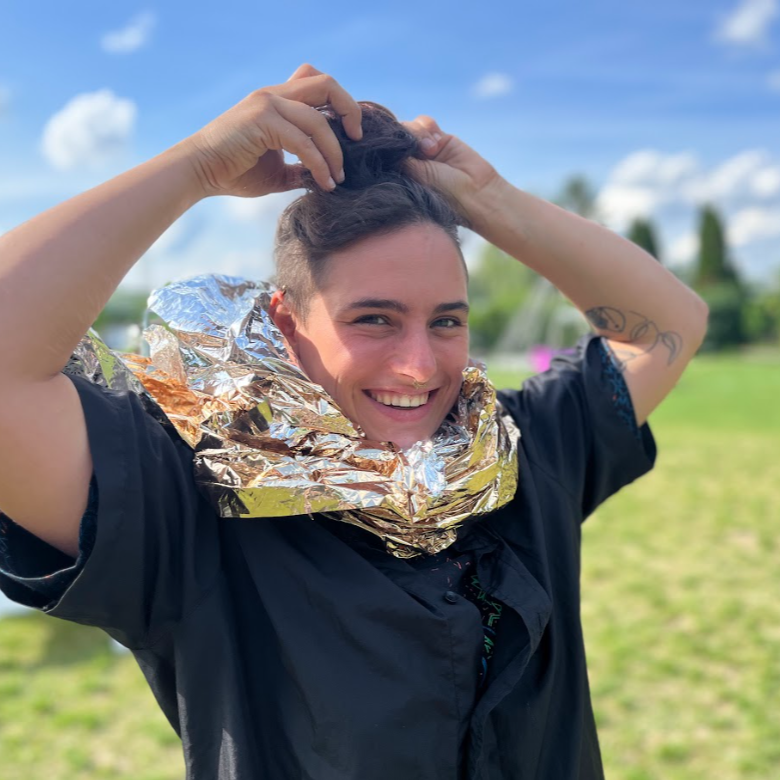Podejścia i metodologie
Rys. 1. Grupa młodych ludzi porusza się po słonecznej łące pod niebieskim niebem; kilkoro z nich jest owiniętych w złote koce ratunkowe.
Rys. 2. Widok z góry na cztery osoby siedzące na trawie z kilkoma karteczkami z czerwonymi słowami i kilkoma większymi arkuszami papieru.
Podejście kreatywne
Kreatywne podejście obejmuje szeroką gamę technik i metod, w tym ćwiczenia somatyczne, sensoryczne, wokalne, konceptualne, muzyczne, wizualne, oparte na ruchu oraz cyrkowe. Najważniejszym aspektem tego podejścia jest to, że materiały, treści i forma prezentacji nie są narzucane z zewnątrz, lecz opracowywane przez samych uczestników. Umożliwia to im wykorzystanie własnej wyobraźni i kreatywności, przy jednoczesnym rozwijaniu środków artystycznego wyrazu i umiejętności praktycznych.
W naszym procesie facylitatorzy artystyczni najpierw przedstawiali uczestnikom różne techniki performatywne (ruchowe, wokalne, sensoryczne, współczesne metody cyrkowe, performance itd.), zapewniając im pulę środków, z której mogli czerpać. Następnie uczestnikom dawano przestrzeń i zachęcano ich do wymyślania własnych koncepcji dotyczących sposobów prezentacji tematów migracji i kryzysu klimatycznego. Na koniec młodzi ludzie opracowali występy (performance) przy wsparciu facylitatorów artystycznych.

Rys. 3. Duży plac przed katedrą, 20 młodych osób stoi w kółku trzymając długie, cienkie patyki.
Rys. 4. Grupa 30 młodych ludzi w dynamicznych pozycjach na suchym, pylistym płaskowyżu, z morzem i budynkami dammusi w tle.
Podejście z wiodącą rolą młodzieży
“Wiodąca rola młodzieży” i “partycypacja młodzieży” to podejścia podkreślające aktywne zaangażowanie i przywództwo młodych ludzi w projektach i inicjatywach. Takie metody są szczególnie przydatne w kontekście takich programów jak Erasmus+, który ma zachęcać młodzież do uczenia się i zaangażowania w różne tematy polityczne i społeczno-kulturowe, m.in. kwestie migracji i kryzysu klimatycznego. W naszym projekcie stosowaliśmy te metody w różnym stopniu w reakcji na dynamicznie zmieniający się charakter procesu twórczego.
Zapraszaliśmy młodych ludzi do współtworzenia programu, angażowania się w uczenie się od rówieśników i z rówieśnikami oraz brania udziału w wymianie kulturowej.
Stosując kreatywne metody mające źródło w improwizacji, uczestnicy stworzyli większość materiału do performance’ów korzystając z własnej kreatywności. Rezultat był bardziej autentyczny i rzeczywiście odzwierciedlał głosy, pomysły, postulaty i energię młodych uczestników.
Wymagało to zachowania delikatnej równowagi – między inicjatywami młodych, ich zamiarami i możliwościami z jednej strony a celami projektu z drugiej. W niektórych obszarach te dwie strony pięknie się ze sobą łączyły, dzięki czemu młodzi ludzie mieli poczucie sprawczości, kiedy widzieli namacalne rezultaty swojej pracy. Stosunkowo duża grupa wiązała się także z różnorodnością pomysłów, opinii i oczekiwań, co wymagało uważnej facylitacji (prowadzenia, moderacji) i elastyczności.
Rys. 5. Dyskusja między trojgiem młodych ludzi i jednym artystą siedzącymi w pomieszczeniu; w tle okno, przed którym stoją 4 młode osoby.
Rys. 6. Uśmiechnięta młoda osoba poprawiająca włosy, ze złotym kocem ratunkowym wokół szyi, stoi na słonecznej łące pod błękitym niebem

cele
Czego się nauczyliśmy dzięki temu podejściu
Klarowna komunikacja
Zapewnij jasną komunikację dotyczącą struktury i celów projektu
Wdrażanie rozwiażań
Skoncentruj się na wdrażaniu rozwiązań, które umożliwiają maksymalną partycypację bez narażania na szwank integralności projektu
Zostaw czas
Zostaw odpowiednio dużo czasu na procesy decyzyjne
Wyznaczony członek zespołu
Wyznacz osobę z zespołu, która będzie pilnować zasad partycypacji i wiodącej roli młodzieży przez cały proces zmian
Różnorodne metody
Stosuj różnorodne metody w dążeniu do konsensusu
Umowa grupowa
Przygotujcie na początku umowę grupową (zob: metoda „Umowa grupowa”, zestaw narzędzi) i regularnie poddawajcie ją refleksji
